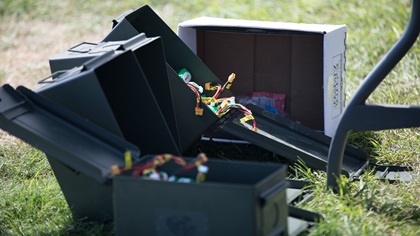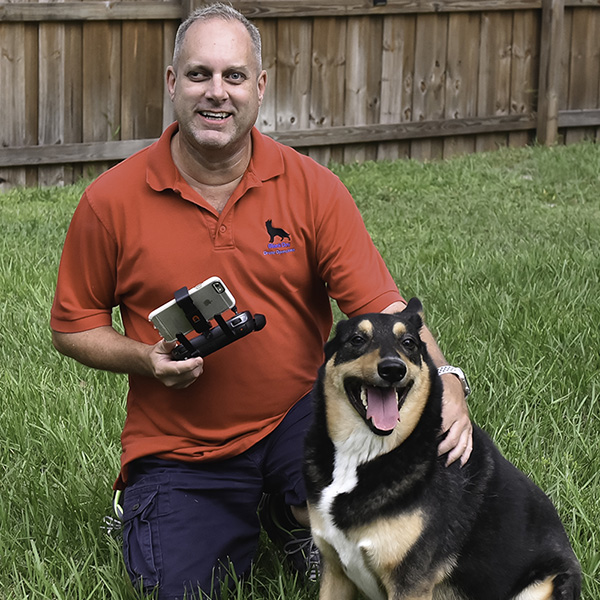A drone alone is not enough
A brief guide to essential accessories
Most drones sold today are ready to fly straight out of the box, but you will need a few key accessories to make them ready for serious work.
Let’s face it, the items you get in most standard drone kits are really just enough to get you off the ground. Of course you get the main ingredients—the drone itself and controller—but you will usually find only one battery, the charger, and not much else aside from a few cables. For the new drone pilot, these items may seem like enough, but after the first (all too short) flight, you will be making a beeline to order, at the very least, one more battery. Having additional power sources is critical for professional drone pilots on the job, and it is also important for recreational pilots who will be spending flight time practicing their skills or just having fun. Most batteries are done after about 15 to 30 minutes, so you can see how quickly your air time will fly by (pun intended).
And what about keeping these batteries charged and ready to go? Consider a car charger for those times when you plan to be out flying for longer periods. With multiple batteries, you can rotate depleted batteries and get a lot more time in the air. Charging hubs can make the process even more efficient, especially if you have a generator or a portable power pack (essentially, a super-sized lithium battery with AC and DC power outlets).
Pro photos
The camera quality of today’s drones just keeps getting better and better. With the ability to shoot in 4K, and with many useful built-in adjustments and effects, you can do amazing still and video photography. Neutral density (ND) filters are available for virtually every popular drone camera and improve your images for certain effects or lighting situations.
Think of them like sunglasses for your camera—they reduce glare and help prevent the brightest areas of the image from being overexposed, or “blown out.” You will typically find individual filters or kits ranging numerically from ND4 and ND8 to ND16 and so on. Higher number filters are darker and work well in strong light. ND filters are also available in polarized versions, which are beneficial when shooting near water or other reflective surfaces to reduce glare.
Polar Pro is a leading supplier of ND filters for many popular drone models. The company also offers a handy downloadable app to help you calculate the right filter to use for your shooting environment. This is great for the non-photo pro to help find the right filter for the best shot.
Better control
One of the most important parts of your gear is a screen for your controller. Some controllers have a small, built-in screen offering some flight data while others now even offer live video from your drone’s camera. However, built-in screens can be on the small side, and in cases where you don’t have the built-in screen, you absolutely must have a screen to run the controlling app and software.
It is common to find operators using their cellphones for this task. While that can work, you’ll find that a larger screen will provide more than just a bigger picture: Accessing controls and settings is much easier on a larger screen. Adding a dedicated mobile device, such as a tablet, makes life easier. You can also streamline things by keeping all unnecessary apps off of that dedicated tablet to maximize its performance.
When deciding on which mobile device to choose, first check to see which control app versions are available from your drone’s manufacturer. This will help guide you toward options like iOS or Android. Then, thinking about size, take a look at your controller mount to see what will physically fit in the cradle. Most will accommodate cellphones, but if you prefer a larger tablet, say an iPad mini or full-size iPad, you may need to add an adapter to fit the larger device. A good example for Mavic Pro owners is the Mavmount, which offers a number of options to mount almost any size phone or tablet imaginable in a very professional, machined aluminum accessory.
Flying in bright conditions can cause excess glare or wash out the image on your mobile device screen. You can remedy this by using a form-fitting hood to enclose the screen and block excess outside light. Most screen hoods simply clip on in a few seconds and are available to fit most any screen size or device type.
Once you have selected your controller, device, and hood, a quality neck strap will make it easier to hold for longer flights. Holding a controller setup can become uncomfortable fairly quickly, more so on those longer missions when you are flying for an hour or more. Many controllers already have a built-in connector for your neck strap, while other types of controllers may need an accessory attachment to use a neck strap.
A case for a good case
Now that you have added some more gear to your flight kit, how do you protect and organize everything when on the move? A good, solid carry case or pack is an essential part of your kit and should not be overlooked. As mentioned above, some combo packages offer a carry bag, but these tend to be smaller and not really designed to carry much more than the basics. Protection is usually "just ok" as well.
You can find many good options online to fit your needs. Some are generic configurations while others offer customized, drone-specific solutions. Lowepro offers a very nice line of Droneguard cases to fit Phantom and Mavic series drones specifically while also offering some generic configurations. But also consider the flexibility of a quality camera case or backpack. These are designed to carry expensive DSLR cameras and lenses, so they have plenty of good, soft, padded internal protection and typically offer flexible dividers you can configure as needed. It is easy to find nice options at electronics stores or camera shops.
Ground gear

It is important not to forget your ground-based gear as well. Using a good landing pad will help protect your gimbal from sand and other debris being kicked up during launch and landing, as well as being a good, high-visibility target for precision landings. Remember to use the weights or stakes that come with your landing pad to secure it to the ground while you are in the air. You don’t want to go chasing it if a little wind gust comes along. Marker cones are also not a bad idea if you need to indicate a perimeter, such as an area for onlookers to avoid.
You also should consider safety when assembling your accessory kit. Having a good emergency response to a failed lithium polymer battery can be critical. One popular solution is using a military surplus ammo can, vented with a hole to let gas escape if you latch the lid down with an “angry” battery inside. You also may want to keep a small ABC fire extinguisher in your kit, and a basic first-aid kit to treat cuts and burns. These are items that can easily be overlooked but make all the difference in the hopefully rare event that you need them.




